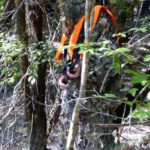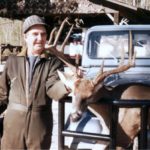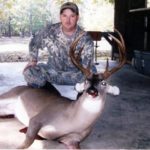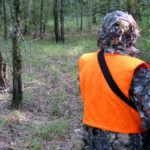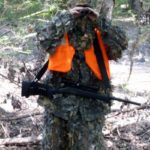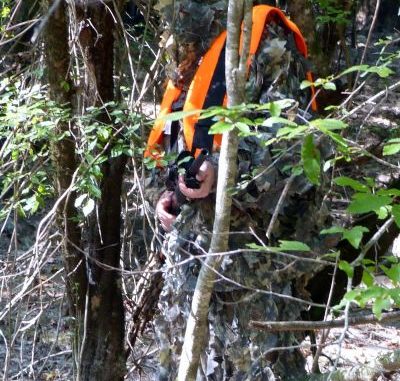
Follow these eight steps to walk right up and tag that big buck you’ve been chasing.
Decades ago, most people deer hunted either by using dogs or quietly stalking through the woods. Today, both methods seem to be dying out because of the land lease system and the increasing popularity of climbing and box stands.
Winnfield resident Brandon Jennings, however, has continued the stalking tradition he learned the technique from his father Bobby, who started sneaking up on deer back in the 1950s.
“In my neck of the woods, my dad is revered as a local trophy hunter,” the younger Jennings said. “Even at the age of 78 he is still a major threat to any old buck that crosses his path.
“I consider myself lucky to have learned from the master.”
But stalking requires patience and concentration.
“It’s more than just easing through the woods hoping to see a buck — it requires skill and dedication,” Jennings said.
It’s worth the effort, however, since by observing some basic ground rules it is possible to slip up on a deer in the woods.
Over the years, Jennings has had many exciting hunts while stalking, but one in particular stands out. For a couple of years he had been hunting a large buck that was traveling over a particular ridge, but he could never catch it in the open.
He finally decided to surprise the deer by teaming up with his father and entering the area from different directions.
“If one of us accidentally spooked the deer there was a good chance that the other would be presented an opportunity,” Jennings said.
After making sure they knew each other’s location and route, father and son started their stalks — and Jennings soon heard a deer snort in the direction of his father.
Thinking it might be his buck, the younger Jennings knelt beside a small tree to break up his outline and watched the crest of the ridge.
Soon Jennings caught a slight glimpse of something that seemed out of place, and quickly realized it was an antler beam. A slight tail flicker then revealed a second buck following behind.
The huge buck he had been hunting was trailing a smaller — but still trophy-sized — deer.
But the bucks were looking around on full alert, making it impossible for Jennings to raise his rifle. The smaller buck finally started down the ridge, but it noticed Jennings at 30 yards and stopped to stare.
The standoff ended when the nervous deer turned and walked back up the ridge to where the larger buck was still frozen in the bushes. Afraid the twitchy bucks might spook and he would lose all chances for a shot, Jennings raised his rifle and bagged the smaller one.
“Sometimes a sacrifice is required to make a hunt successful,” he said philosophically.
The elder Jennings also followed stalking’s ground rules to shoot one of the largest bucks taken in Winn Parish. After several years of scouting, he had pinpointed a big deer and wounded it in thick cover one late afternoon.
Days of searching failed to locate the deer, and then Jennings concluded the bullet was deflected by a limb.
Sign immediately began to disappear in the area, but several weeks later Mr. Jennings noticed some old scrapes near a beach tree on the edge of a creek had become active again.
Suspecting it might be the big buck he had wounded, he decided to stalk along the creek one morning.
As he approached the area on an old road, taking advantage of the wind direction, Mr. Jennings spooked a deer that was trying to use a ridge swale to get to the rubs.
After stalking for less than an hour, he caught a glimpse of a large buck coming down the swale. The deer had its nose to the ground and was rushing toward the scrapes near the beach tree.
It was so focused on the scrapes that it never noticed Mr. Jennings, who dropped it with one shot.
The buck was a perfect 10-point with a 21 ¾-inch spread, and it was green scored 164 Boone and Crockett points.
Mr. Jennings noticed that one back foot had been blown off, and the deer was in poor condition from infection. It obviously was the same one he had shot a month earlier, but the buck showed no sign of being wounded as it rushed toward the scrapes.
Brandon Jennings said these stories illustrate why he continues to hit the woods, leaving the stands behind.
“The thrill of this style of hunting is unmatched, and it can be super productive if you put in the effort,” he said. “I know the buck is there, he knows I am there, and we are both on alert and looking for any sign of the other.”
There’s no better satisfaction than outwitting a buck on his own turf.
Here are Jennings’ Top 8 tips on how to experience the same success.
1) Hunt where the deer are
Jennings is adamant that “location is the key” when it comes to stalking. Finding that location, however, requires a lot of scouting.
What Jennings looks for depends on the time of the year. Early in the season he focuses on food sources, and travel routes to and from bedding areas. The middle to late season is the time to find rubs and scrape lines that show rutting bucks are in the area. When the rut is over, he again looks for food sources because the bucks will be rebuilding their strength.
Jennings mostly hunts in the Kisatchie National Forest, targeting small areas tucked behind thick pine plantations and isolated woods that have been overlooked by other hunters. Narrow strips of hardwoods along branch bottoms and ridges that connect feeding and bedding areas are also good spots.
And for whatever reason, certain areas continue to hold bucks every year, so narrowing down the search becomes easier over time.
“I find that places my father hunted many years ago still have the same key areas for rut activity and scrape lines,” Jennings said. “There are areas that produce nice bucks time and time again.”
2) Use the wind
A deer’s greatest defense is its incredible sense of smell, so the wind should always be blowing in the hunter’s face. Jennings said this is the cardinal rule of stalking.
“Even with today’s scent technology, if you are hunting with the wind in the deer’s favor, you are already at an extreme disadvantage,” he said.
When stalking, the wind can also mask your presence: A moderate breeze can muffle any noise you might make, and limbs and bushes moving in the wind help hide your movement.
3) Move slowly
Moving slowly is the second-most-important part of stalking. There are no set rules on how fast to walk because it depends on visibility, density of the woods and dryness of the ground — but the slower the better. The fact is that an experienced stalker might only cover a few hundred yards during an entire hunt.
Jennings likes to move a very short distance, and then stop for a long time before moving on.
“Also, at times I will sit for a spell if it’s a location that I have total confidence in from previous stalks,” he said. “Just remember to take your time and observe all your surroundings.”
4) Stretch your eyes
One essential part of stalking is training your eyes to focus on the farthest visible object so you can spot the deer before it sees you.
Eyes will usually only pick up movement between you and your point of focus. That means if you’re watching for deer 40 yards away you won’t notice a tail flicker beyond that range. If, however, you focus on objects 100 yards away your will pick up movement everywhere in between.
Also, a good pair of compact binoculars is helpful for scanning the distant woods. It is surprising how many small openings there are that cannot be seen with the naked eye.
5) Be a ninja
Stealth is the key to stalking, and the successful hunter hides in the shadows. Always look ahead and plan a route that takes advantage of cover and avoids dry leaves and limbs.
Stay in the shade, avoiding areas bathed in sunlight.
“I walk and stop and look and repeat this movement, always staying in cover if possible, and as a rule I usually stop beside a tree,” Jennings said. “This gives you cover and also sometimes a nice rest to place your rifle against.”
6) Be a gunfighter
Nothing is more frustrating than watching for movement when the sun is shining in your eyes. So be like gunfighters of the Old West: Keep the sun at your back and you’re much more likely to see the deer first.
This is especially true if there is standing water that might reflect sunlight into your eyes.
7) Pay attention to details
A stalking hunter usually will not see the whole deer at first. Instead, look for anything that seems out of place or movement in the peripheral vision.
Most things in the woods are vertical, so be aware of horizontal shapes that might be a deer’s body.
Jennings said to look for small movements.
“Sometimes I have made a successful hunt just because I noticed the white on a deer’s ear, or maybe picked out a nose or partial antler in the brush or simply saw the slight flicker of his ear or tail,” he said.
8) Use the element of surprise
Jennings believes the element of surprise is the biggest advantage of stalking. Hunters put a lot of emphasis on learning deer’s habits, but Jennings knows that it works both ways.
“We talk about patterning deer, but in most instances it is the hunter who is being patterned,” he said. “When you hunt from the same location, enter from the same direction and use a specific technique, you are easily patterned by a smart buck.”
Stalking allows you to take the deer by surprise because you can hunt an area from different directions as conditions warrant.
